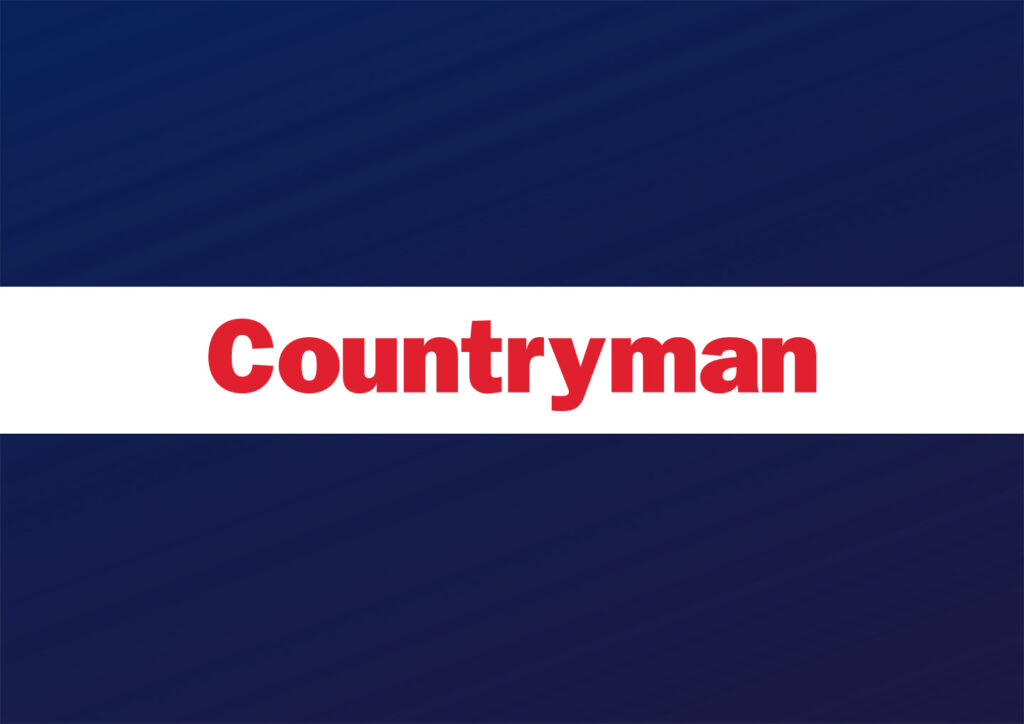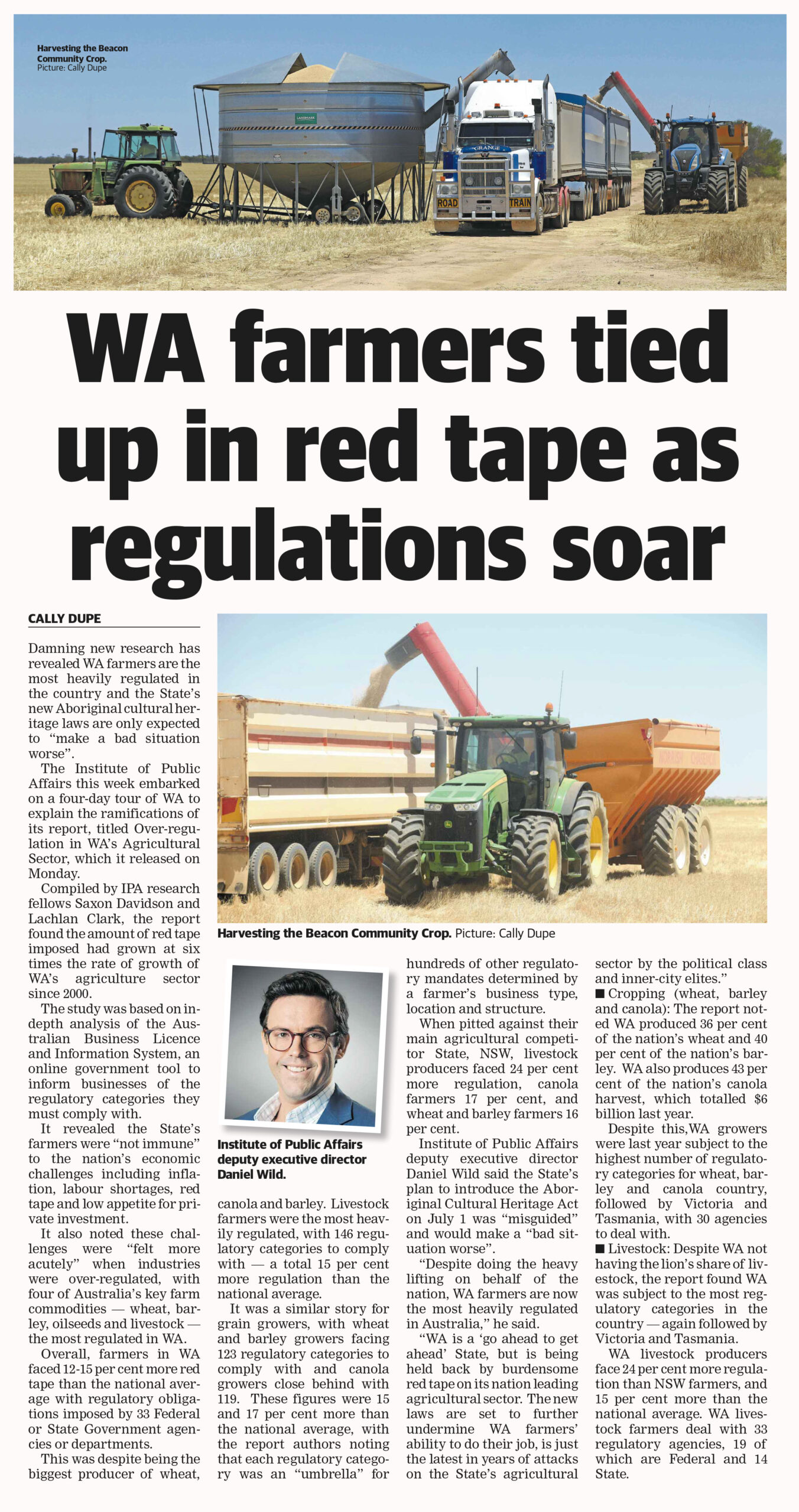
Article by Cally Dupe courtesy of the Countryman.

Damning new research has revealed WA farmers are the most heavily regulated in the country and the State’s new Aboriginal cultural heritage laws are only expected to “make a bad situation worse”.
The Institute of Public Affairs this week embarked on a four-day tour of WA to explain the ramifications of its report, titled Over-regulation in WA’s Agricultural Sector, which it released on Monday.
Compiled by IPA research fellows Saxon Davidson and Lachlan Clark, the report found the amount of red tape imposed had grown at six times the rate of growth of WA’s agriculture sector since 2000.
The study was based on in-depth analysis of the Australian Business Licence and Information System, an online government tool to inform businesses of the regulatory categories they must comply with.
It revealed the State’s farmers were “not immune” to the nation’s economic challenges including inflation, labour shortages, red tape and low appetite for private investment.
It also noted these challenges were “felt more acutely” when industries were over-regulated, with four of Australia’s key farm commodities – wheat, barley, oilseeds and livestock – the most regulated in WA.
Overall, farmers in WA faced 12-15 per cent more red tape than the national average with regulatory obligations imposed by 33 Federal or State Government agencies or departments.
This was despite being the biggest producer of wheat, canola and barley. Livestock farmers were the most heavily regulated, with 146 regulatory categories to comply with – a total 15 per cent more regulation than the national average.
It was a similar story for grain growers, with wheat and barley growers facing 123 regulatory categories to comply with and canola growers close behind with 119. These figures were 15 and 17 per cent more than the national average, with the report authors noting that each regulatory category was an “umbrella” for hundreds of other regulatory mandates determined by a farmer’s business type, location and structure.
When pitted against their main agricultural competitor State, NSW, livestock producers faced 24 per cent more regulation, canola farmers 17 per cent, and wheat and barley farmers 16
per cent.
Institute of Public Affairs deputy executive director Daniel Wild said the State’s plan to introduce the Aboriginal Cultural Heritage Act on July 1 was “misguided” and would make a “bad situation worse”.
“Despite doing the heavy lifting on behalf of the nation, WA farmers are now the most heavily regulated in Australia,” he said.
“WA is a ‘go ahead to get ahead’ State, but is being held back by burdensome red tape on its nation leading agricultural sector. The new laws are set to further undermine WA farmers’ ability to do their job, is just the latest in years of attacks on the State’s agricultural sector by the political class and inner-city elites.”
Cropping (wheat, barley and canola): The report noted WA produced 36 per cent of the nation’s wheat and 40 per cent of the nation’s barley. WA also produces 43 per cent of the nation’s canola harvest, which totalled $6 billion last year.
Despite this, WA growers were last year subject to the highest number of regulatory categories for wheat, barley and canola country, followed by Victoria and Tasmania, with 30 agencies to deal with.
Livestock: Despite WA not having the lion’s share of livestock, the report found WA was subject to the most regulatory categories in the country – again followed by Victoria and Tasmania.
WA livestock producers face 24 per cent more regulation than NSW farmers, and 15 per cent more than the national average. WA livestock farmers deal with 33 regulatory agencies, 19 of which are Federal and 14 State.
